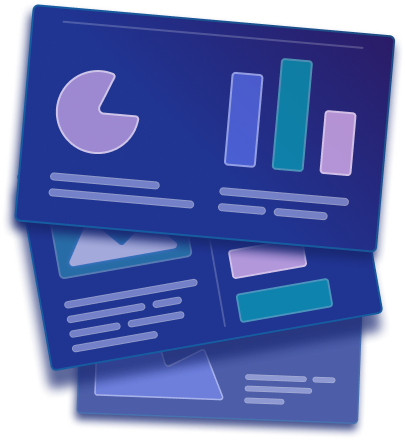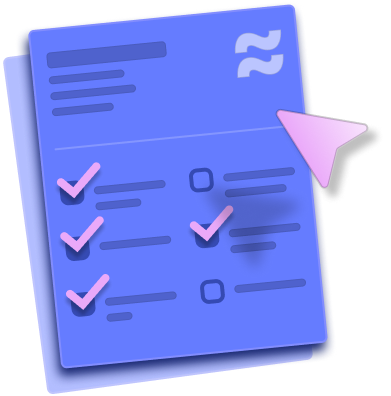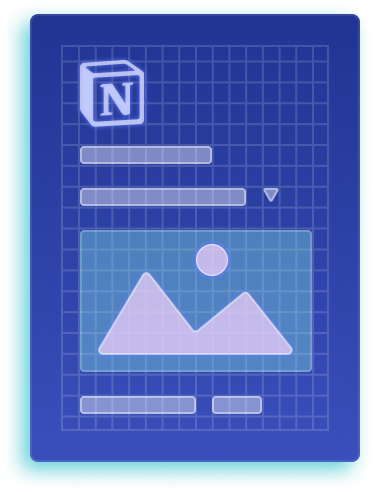
Webflow Review: An Expert Deep-Dive [2025]
In the following Webflow review, I will make a detailed and honest overview of the popular builder, pointing out the main advantages and disadvantages.
When I first encountered Webflow, I was confused, only to discover its true potential after several uses. But, getting there required jumping a few hurdles. That’s why I want to make an honest review of Webflow and help decide if it’s the right pick for you.
Who is this review for?
It’s for people considering using Webflow as the main tool for building sites and for businesses considering having their website hosted on or migrated to Webflow.
{{cta}}
What Is Webflow?
Webflow is a modern web design tool and hosting platform that blends design and development. It's an ideal choice for web designers and developers seeking a robust yet intuitive environment to bring their creative visions to life.
With its powerful visual editor, Webflow allows for the design of professional, responsive websites without the need for extensive coding knowledge.
Additionally, for developers, Webflow offers advanced functionalities like custom code integration and rich animations.
Beyond design and dev, Webflow serves as a reliable hosting platform, ensuring that websites are not only visually appealing but also fast, secure, and scalable. Whether you're a seasoned designer, a developer looking to streamline your workflow, or a business owner aiming to establish a strong online presence, Webflow provides a comprehensive set of tools to build and manage a website with ease.
We’ve covered a comprehensive explanation of Webflow’s features and capabilities here.

Who Is Webflow For?
Before answering this question, you have to ask yourself this: do you want to use Webflow to build a website or have your website built on Webflow by someone else?
In other words, Webflow has two target customers: web designers/developers/marketers and businesses who want a Webflow-powered website.
If you belong to the first category, you belong to one of the following groups:
- A freelance web designer or developer — If you want to offer web design and development services and use a great visual builder, Webflow is the right choice.
- A web design agency — If you’re an agency specializing in web design and development, Webflow is a great option. Flow Ninja is one such example. Our Webflow agency has extensive experience in designing, building, and maintaining sites with this tool.
- Marketing, SEO, content freelancers or agencies — Being a CMS and an SEO-powered platform, Webflow can be used by individuals and businesses who offer marketing, SEO, and content services to their clients.
Customers who want a Webflow site probably belong to one of the following categories:
- Startups
- Small, medium, and large businesses
- Enterprise companies
You’re probably wondering: why not both? Well, virtually anyone can try to both design and host their site via Webflow, but in many cases, it comes down to the following two categories:
- Solopreneurs — They often go for the low-budget plan and use Webflow to make quick one-pagers to showcase their business.
- Large brands and tech companies — They often have in-house teams that can design and develop a site in Webflow. Still, we recommend contacting Webflow experts to get the most from the popular builder.
Ease of Use — Is Webflow Hard to Learn?
Webflow stands out in the web design and development landscape as a sophisticated tool that marries design with functionality. As a no-code platform, it offers immense power and flexibility, making it a more capable option compared to simpler website builders like Wix.
However, this vast range of capabilities comes with a caveat: a steep learning curve.
While beginners can certainly build websites with Webflow, mastering its full potential requires time and effort. The platform's user interface, though thoughtfully designed, packs a plethora of advanced features that can initially seem overwhelming.
For designers and developers accustomed to the limitations of other drag-and-drop builders, Webflow’s expansive customization options open up a world of possibilities but also necessitate a deeper understanding of web design principles.
This makes Webflow particularly appealing for professionals who desire granular control over their designs but also signifies that those new to the platform should be prepared for a significant investment in learning to fully leverage its capabilities.
In short: yes, Webflow is hard to master, as it requires understanding web design principles and much more.
Webflow Features and Flexibility
Webflow is a powerhouse of design and development tools, offering a suite of functionalities that cater to both the aesthetic and technical aspects of building a website.
At the core of its offerings are the visually-driven design tools. Users can choose from a wide array of templates, each customizable to fit specific design needs and brand aesthetics. These templates serve as a starting point from which users can delve into deep customization using Webflow's Editor.
The platform's Editor is where its true strength lies. It offers a range of tools for detailed design work, such as:
- CSS grid and flexbox — These tools allow for intricate layout designs, enabling users to create complex, responsive structures that adjust seamlessly across different screen sizes.
- Typography and color — Users have access to a broad spectrum of typefaces and color palettes, along with detailed controls for font styles, sizes, and color schemes, ensuring that every aspect of the site aligns with brand guidelines.
- Animations and interactions — Webflow provides robust tools to add animations and interactive elements. This includes everything from simple hover effects to complex animations that can be triggered by scrolling or other user actions.
- CMS and e-commerce integration — For those looking to add dynamic content or build online stores, Webflow offers a built-in content management system (CMS) and e-commerce functionalities. These tools make it easy to manage and display content and set up an online store with customized product listings and shopping carts.
- Custom code integration — While Webflow is a no-code tool, it also caters to developers by allowing the integration of custom HTML, CSS, and JavaScript. This feature opens up endless possibilities for customization and functionality, making it a flexible option for advanced users.
- SEO tools — Webflow doesn't neglect the importance of search engine optimization. The platform includes integrated SEO tools to help optimize websites for search engines, ensuring better visibility and ranking.
- Responsive design controls — One of Webflow’s standout features is its responsive design controls, which let designers adjust layouts and styles for different device sizes directly within the visual editor.
- Asset management — Users can easily manage all their design assets within Webflow. This includes the ability to upload and organize images, videos, and other media files, making it easy to maintain a consistent design across the website.
Does Webflow Have Templates?
Yes, Webflow offers a wide variety of templates for users to choose from. They are designed to cater to various needs and industries, ranging from basic layouts to sophisticated designs tailored for specific business sectors like e-commerce, portfolios, blogs, and corporate websites.
The key aspects of Webflow's templates include:
- Professionally designed — Webflow’s templates are created by professional designers, ensuring high-quality, modern aesthetics that are in line with current web design trends.
- Customizable — Users can modify almost every aspect of the template to suit their specific needs and brand identity, from colors and fonts to layout and functionality.
- Responsive design — The templates are built with responsiveness in mind, meaning they automatically adjust and look great on any device, whether it's a desktop, tablet, or smartphone.
- CMS-ready — Many templates come integrated with Webflow’s CMS, making it easy to manage and publish content like blog posts, portfolio pieces, or product listings.
- E-commerce capabilities — For users interested in online retail, Webflow provides e-commerce templates that include features like shopping carts, product pages, and payment integrations.
- Variety of choices — The Webflow template marketplace offers a wide range of options, from free templates for users just starting out to premium templates with more advanced features and designs.
- SEO-friendly — These templates are designed to be SEO-friendly, ensuring that the fundamentals of good SEO practices are incorporated into the design.
If you’re not sure whether templates are the right fit for your project, check out our blog discussion on that.

Webflow CMS — Is It Worth It?
Visual Content Editor: Webflow CMS allows you to edit content directly on your website with a WYSIWYG (What You See Is What You Get) editor, making it easy to see how the content will appear when published.
- Dynamic content structure — You can define custom content structures for different types of content (like blog posts, product listings, etc.) using Collections, which function similarly to databases.
- SEO control — It provides robust tools to optimize your content for search engines, including customizable meta titles and descriptions.
- No plugins required — Unlike WordPress, most functionalities are built into the platform, reducing the need for external plugins.
- Real-time previews — You can preview changes in real-time before publishing, which is beneficial for ensuring content accuracy.
- Designer integration — Seamlessly integrates with the Webflow Designer, making it easy to design around your content.
I couldn’t avoid comparing Webflow’s CMS to the most popular CMS in the world — WordPress. Here are the key takeaways:
- Webflow offers a more intuitive visual editor, ideal for users with limited coding knowledge, while WordPress provides greater customization through a vast array of themes and plugins.
- Webflow stands out for better out-of-the-box performance and security, given its hosted nature, as opposed to WordPress, which relies on external hosting and can be impacted by plugin choices.
- Pricing models differ: WordPress is free but can incur additional costs for hosting and plugins, while Webflow operates on a subscription basis.
- Webflow is more design-focused, making it suitable for design-centric sites, whereas WordPress excels in content management for content-heavy sites.
- WordPress benefits from a larger community and extensive support resources compared to the growing but smaller community of Webflow.
{{cta}}
Webflow SEO — What to Expect?
Webflow is highly effective for SEO due to its comprehensive features and tools that support search engine optimization.
Webflow's intuitive design interface makes creating user-friendly and attractive pages easy, which contributes to better SEO. Its sites are generally fast, fulfilling core web vitals by default, and the platform allows for effortless editing of crucial SEO elements like metadata, SEO-friendly URLs, and structured data without needing to code.
Additionally, Webflow facilitates more advanced SEO features such as custom schema data, hreflang tags for international SEO, and canonical tags to manage duplicate content.
Its CMS enables easy editing of collection pages, further enhancing SEO.
Overall, Webflow's integrated approach, combined with its clean code output and responsive design capabilities, makes it an excellent choice for optimizing websites for search engines.
That said, Webflow alone cannot help you with implementing and tracking your content and SEO strategies. Consider using the standard tool stack, including SEMRush, Google Search Console, Ahrefs, Data Goat, and more.
Here’s a list of some of the commonly used Webflow SEO features:
here's a list of Webflow's SEO features:
- Automated Sitemaps
- Canonical Tags
- Custom 301 Redirects
- Editable Robots.txt Files
- Google Analytics Integration
- Meta Titles and Descriptions
- Open Graph Settings
- SSL Certification
- Semantic HTML5 Elements
- Site Search
- Structured Data Markup
If you’re interested in learning more about Webflow’s SEO potential, see our dedicated blog post.
How Much Does Webflow Cost?
Pricing is somewhat complex for Webflow, and we recommend reading our detailed Webflow pricing guide to understand how it works.
In short, you should pick a pricing plan based on what you want to do with Webflow. If you have already hired a freelancer or an agency to build your Webflow website, you just need to pick one of the site pricing plans.
These plans start at $14 a month if billed annually. However, the most popular plan, dubbed CMS, starts at $23 a month, and it provides overall the best price/value ratio unless you opt for the Enterprise option, which doesn’t feature a pricing option. Instead, you need to contact Webflow’s sales team to get a quote. If your website is an online store, you should pick an e-commerce hosting plan starting at $29 monthly.

If you want to build your website or have a team within a company that will actively rely on one (or more) of Webflow’s tools, you need to pick one of the workspace plans. There are two separate sets of pricing plans for in-house teams and for freelancers and agencies.
The basic plans are free of charge in both cases, but they also come with many limits. Plans for in-house teams start at $19 per month per seat, while freelancer & agency plans start at $16 per month per seat.
Webflow Customer Support and Community
One of the standout features of Webflow is its robust customer support and the vibrant community that surrounds it.
Here's a closer look at what Webflow offers in terms of support and community engagement:
- Webflow University — Webflow University is an extensive learning resource offering a comprehensive range of tutorials and courses. These resources are designed to cater to both beginners and advanced users.
- Webflow forum — The Webflow Forum is a dynamic platform where users can interact, ask questions, and share insights. It's a place for real-time problem-solving where both newbies and seasoned professionals collaborate. The forum is not just about troubleshooting; it’s a community hub where users share ideas, templates, custom code snippets and even offer feedback on each other’s projects.
- Webflow marketplace — Webflow encapsulated its entire community experience via Webflow Marketplace, where you can access apps, libraries, list of experts, showcased work (some of which is clonable), and templates.
- Community pages and events — Webflow also encourages community interaction through various pages and events. These include user groups, meetups, and workshops, both online and offline. These events are perfect for networking, learning from experts, and staying abreast of the latest trends in web design and development. They also showcase how Webflow is committed to building a supportive and engaged user base.
- Social media groups — Beyond the official channels, there are numerous social media groups and channels dedicated to Webflow users. These platforms offer a more informal space for users to connect, share experiences, and provide mutual assistance.
- Direct customer support — In addition to these community resources, Webflow offers direct customer support through various channels, including email and chat.
Pros and Cons of Using Webflow
Here’s a quick recap of the main advantages and disadvantages of Webflow.
Webflow Pros
- Visual design interface — Webflow offers a powerful visual editor that allows for the design of professional websites without deep knowledge of coding.
- Responsive design — The platform makes it easy to create responsive websites that look great on all devices, an essential feature in today’s mobile-centric world.
- Customization — Webflow provides extensive customization options, allowing users to tweak and adjust their site to their specific needs and brand identity.
- CMS capabilities — The built-in CMS is flexible and user-friendly, making it easier to manage and publish content, ideal for blogs, portfolios, and e-commerce sites.
- SEO-friendly — Webflow has built-in SEO tools that help in optimizing websites for search engines, which is vital for online visibility.
- Hosting reliability — Webflow offers hosting services that are known for their reliability and speed, ensuring good performance of the websites hosted on their platform.
- Regular updates — The platform is continually updated with new features and improvements, keeping it at the forefront of web design technology.
- Learning resources — With resources like Webflow University, users have access to comprehensive learning materials to help them make the most of the platform.
Cons of Webflow
- Steep learning curve — Despite its visual interface, Webflow can be complex to learn, especially for users without a background in web design or development.
- Cost — While Webflow offers a free version, more advanced features and hosting options come with a cost, which can be higher compared to other platforms, especially for the e-commerce functionalities.
- E-commerce limitations — While Webflow supports e-commerce, it may not be as comprehensive in its features as dedicated e-commerce platforms like Shopify.
- Export limitations — While Webflow allows you to export your site’s code, there are limitations as some dynamic site features may not work outside of Webflow’s hosting.
- No offline working — Users cannot work on their Webflow projects offline, which can be a limitation for those without constant internet access.
Webflow vs Other Builders
Even though I am using Webflow on a daily basis, I understand that it may not be the perfect fit for all use cases. That’s why I compared it to other popular builders, CMSs, and design tools. Here’s an overview, feel free to explore the comparison by clicking on the links:
- Webflow vs WordPress
- Webflow vs Elementor
- Webflow vs Wix
- Webflow vs Squarespace
- Webflow vs Duda
- Webflow vs Figma
- Webflow vs Contentful
- Webflow vs Bubble
- Webflow vs Framer
Conclusion: Is Webflow Worth It?
After mastering Webflow, I managed to do with it much more than I could with its competitors, but getting there was not easy.
Webflow is a powerful and versatile tool for web design and development, well-suited for a range of users from individual designers to large businesses. Its strengths lie in its intuitive visual design interface, responsive design capabilities, and comprehensive CMS, which make it ideal for creating professional, SEO-friendly websites without needing extensive coding knowledge.
However, the platform's steep learning curve and potentially higher cost can be deterrents, particularly for beginners or small-scale users. Additionally, its e-commerce features, while robust, may not be as extensive as those offered by specialized e-commerce platforms.
Despite these considerations, Webflow's advantages, make it a valuable choice for many in the web development sphere and for many businesses looking a unified solution to build, host, and maintain their website.
If your business is considering using Webflow, make sure to get in touch with Flow Ninja, an award-winning Webflow partner.
{{cta}}





The 2025 Marketer’s Guide to CMS
Check out our comprehensive whitepaper covering the best CMS options for marketers who aim to scale their content operations.
.png)

.png)

in mind?
Talk with our team and learn how your ideas can become digital experiences.
![Webflow Review: An Expert Deep-Dive [2025]](https://cdn.prod.website-files.com/65eae076071dff04d3670886/660aa2a0f59271e8c9157ada_65b372f857cf0ee336ea34a5_1080%2520x%25201080-min.png)
.svg)







.webp)








.png)
.png)










.svg)

.png)
.png)
.webp)
.svg)


